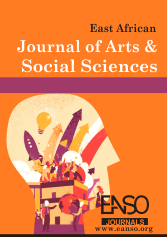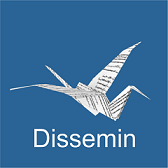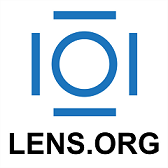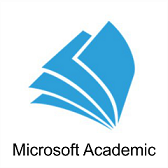The Role of Strategic Communication in Girls and Women's Empowerment in Kenya's Arid and Semi-Arid Lands (ASALs)
Abstract
Background and Problem Statement: In many African contexts, women and girls face systematic marginalisation through the denial of fundamental rights and exposure to various forms of violence. At critical developmental stages, girls encounter barriers including forced early marriages, female genital mutilation, and exclusion from educational opportunities, particularly in rural and culturally conservative settings. These challenges manifest as systemic discrimination that perpetuates gender inequality across socio-economic development spheres. Relevance and Objectives: Strategic communication has emerged as a crucial tool to break down barriers that hinder progress toward gender equality and women's empowerment. This study investigates how strategic communication can transform the position of women and girls in Kenya's ASAL regions, focusing on communication's role in advocating for gender equality and examining lessons learned from various programs and initiatives. Methodology and Key Findings: Through qualitative document analysis of policy frameworks, organisational reports, and academic literature, this study identifies that community engagement platforms such as barazas, women's group meetings, advocacy campaigns, media initiatives, and digital platforms effectively raise awareness and promote behavioural change. Strategic communication methods work effectively in ASALs by leveraging culturally appropriate channels, utilising local languages, and incorporating traditional communication structures to overcome barriers posed by illiteracy, limited connectivity, and patriarchal resistance. Conclusions and Recommendations: The study reveals that while strategic communication offers immense opportunities for reshaping gender dynamics through various media channels and community dialogues, significant challenges remain, including cultural resistance, limited digital literacy, and weak policy implementation. Effective strategic communication requires coordinated efforts among stakeholders, gender-sensitive programming, and integration of traditional and modern communication approaches to achieve sustainable women's empowerment in ASAL contexts.
Downloads
References
Adetoun, O., & Alice, B. (2013). Women Empowerment Through Access to Information: The Strategic Roles of Non-governmental Organizations in Nigeria. US-China Education Review, 103-115.
African Union. (2003). Protocol to the African Charter on Human and Peoples' Rights on the Rights of Women in Africa. Maputo: African Union.
Ahmed, M. (2011). Constraints faced by Women Entrepreneurs in Small-Scale and Micro-Enterprises in Arid and Semi-Arid Areas in Kenya: A Case Study of Isiolo Central. Kampala: Kampala International University.
Alice, B., & Steffen, M. (2005). Posttraumatic stress disorder and memory problems after female genital mutilation. The American Journal of Psychiatry, 1000-1002.
Akuja, T., & Kandagor, J. (2024). Climate Smart Agriculture in Kenya's ASALS: gaps and barriers in policy development and implementation. African Journal of Climate Change and Resource Sustainability.
Derina, H., & Ansgar, Z. (2014). Strategic Communication. New York: Routledge.
Febriantina, S., Salsabila, A. F., Danisworo, H., Fauzia, M., & Albana, M. A. (2025). The Role of Effective Communication in Leadership: A Literature Review. Klabat Journal of Management, 1-10.
Gail, T., & Kimberlie, S. (2014). An Introduction to Strategic Communication. International Journal of Business Communication, 3-11.
Hallahan, K., Holtzhausen, D., Ruler, B., Verčič, D., & Sriramesh, K. (2007). Defining Strategic Communication. International Journal of Strategic Communication, 3-35.
Human Rights Watch. (2024, July 31). Femicide and Reproductive Violence Harm African Women, Girls. New York, United States.
International Media Support [IMS]. (2020, February 21). The crucial role of media in achieving gender equality. International Media Support/IMS, p. 2.
International Bank for Reconstruction and Development [The World Bank]. (2013). Empowering Women. Washington: International Bank for Reconstruction and Development [The World Bank].
Kagume, J. (2025, June 10). The Elusive Two-Thirds and Cost of Selective Constitutionalism. Institute of Economic Affairs, p. 2.
Kenya Institute for Public Policy Research and Analysis [Kippra]. (2019). Sessional Paper No. 02 of 2019: National Policy on gender and Development. Retrieved from https://repository.kippra.or.ke/items/ee8d930d-6240-4cfb-8032-286fe58140f6
Mohamed, A. (2010). Women Entrepreneurs in Small-Scale Enterprises and Micro Finance Institutions: A case study of Wajir District, North Eastern Province of Kenya. Kampala International University, College of Economics and Management Sciences.
Mubaiwa, O., & Chilo, D. (2025). Female Genital Mutilation (FGM/C) in Garissa and Isiolo, Kenya: Impacts on Education and Livelihoods in the Context of Cultural Norms and Food Insecurity. Societies, 1-13.
Orchid Project. (2025). Data Update: FGM/C in Kenya. Available at https://www.fgmcri.org/country/kenya/
Sanni, B. (2025). The Role of Media and Representation in Shaping Women Leaders. Ladoke Akintola University of Technology, 2-6.
United Nations Office on Drugs and Crime [UNODC]. (2022). Gender-related Killings of Women and Girls (Femicide/Feminicide). UN WOMEN.
United Nations Population Fund [UNPF]. (2024). Female Genital Mutilation Dashboard (FGM) - Kenya. Retrieved from https://www.unfpa.org/data/fgm/KE
United Nations Development Fund for Women [UNIFEM]. (2003). Making a Difference Strategic Communications to End Violence against Women. New York: United Nations Development Fund for Women (UNIFEM).
United Nations. (2022). Gender-based violence against women and girls in Southern Africa. Pretoria: United Nations.
UN Women. (2025, March 25). Women Count. Retrieved from https://data.unwomen.org/country/kenya
UN Women. (2024, June 27). Types of violence against women and girls. Retrieved from https://www.unwomen.org/en/articles/faqs/faqs-types-of-violence-against-women-and-girls
Wakene, G. T., Ali, H., & Tesema, D. M. (2023). An Assessment of the Perceived Role of Radio in Women's Empowerment: the Case of Bonga FM 97.4. EJLCC, 2-39.
Wilson, O. (2011). Developing effective communication strategy to enhance women empowerment to achieve the MDGs for Sustainable Development in Africa. Conference Proceedings, Innovation and Sustainability Conference and Expo (pp. 24-27). Kyambogo: Kyambogo University.
World Economic Forum. (2024). Global Gender Gap 2024. Geneva: World Economic Forum.
World Health Organization [WHO]. (2025, January 31). Female genital mutilation. Retrieved from https://www.who.int/teams/sexual-and-reproductive-health-and-research-(srh)/areas-of-work/female-genital-mutilation/health-risks-of-female-genital-mut
Copyright (c) 2025 Makabe Morris

This work is licensed under a Creative Commons Attribution 4.0 International License.




























